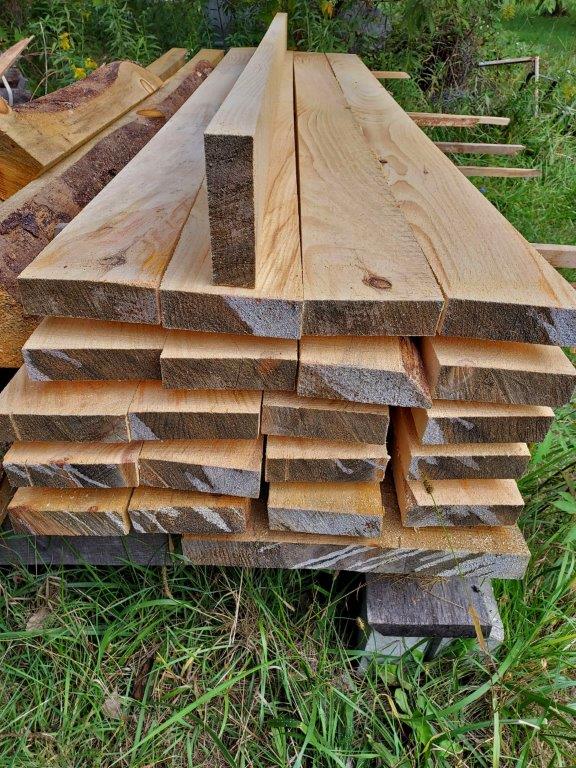Sawyer Rob
Addicted to ArboristSite
First of all, what you are calling rift in your pict. is not accurate, it's really full quartersawn, there's more rift in what you are calling quartersawn.Again, I've never used one, but I have been looking and thinking about it. Thanks for the reply, as I really wanted to hear criticisms of the swing-blades, and why NOT to buy one. Naturally, their sales dept will only tell you how great they are. That being said, let me present a couple of counter-arguments to your comments
Once set up, with the frame leveled to the log, or the log leveled to the frame, the swing-blades cannot produce the real wide slabs like the band saws. but a 14" saw has no trouble making 12" planks, as they can cut from either side. Obviously, there would be some limitations to what percentage of the log can be turned into wide boards. I'd guess that most of the lumber they would produce would be limited to the width of one cut, rather than double width. You could definitely trim a log down to the "double cut" width on a log, and then produce that width for the bulk of the log you are sawing,
Given that they can cut equally wide or tall, I'm pretty sure that a greater percentage of the wood will be quarter-sawn, if that is the operators goal.
View attachment 1113639
1. Some swing blade saws have a 45° setting on both sides, so quarter sawn is definitely possible. Band saws can only produce "plain sawn". I don't understand how you can be critical of the type of cuts that the swing blades produce, since they have more versatility than a band mill that only cuts slabs on one plane. Granted, most of the better band mills comes with hydraulics to roll the logs, but I don't see that as a big advantage, given that they only produce slabs. After you make the slabs, then all that wood must be re-sawn into the desired width. That's a whole separate process to add before you get lumber.
2. Now if you are sawing for big slabs, as many guys do, a band-saw would be the only way to go. They would also be better at making really big beams, although the swing blade can cut a lot of lumber away from the log to leave nothing but a big beam. If you just want finished dimensional lumber, I don't know why the swing blades wouldn't be quicker and easier.
3. I used to deliver logs down to the Timber King sawmill factory for their sales and promotion. They would give me some of the lumber for my efforts. Unfortunately, I kept bringing them logs that were too big for their saws, and then they would ask me to rip the log in half so they could handle it. They even asked me for a bigger log one time, as they were developing a larger capacity sawmill. I never got any wood off that log, because (they said) that my log broke their prototype. Swing-blade mills don't have that problem.
1. This is just NOT true You turn the log to get what ever cut that you want. The second highlight just isn't true either, only a few if any boards need edged.
2. I can get multiple beams with a BSM, not just one big beam.
3. It's true that super big logs are easier with a swinger, but what percentage of your logs are super big? 99'9% of my logs aren't, and that's the way it is for the average sawyer.
How do you saw the tension out of a log with a swinger? How do you grade saw with a swinger? That's two important things that will be done daily, so tell me how you will do that with a swinger.
You really need to learn a lot more about how to mill a log with a BSM and then you will see the advantages of one.
SR








